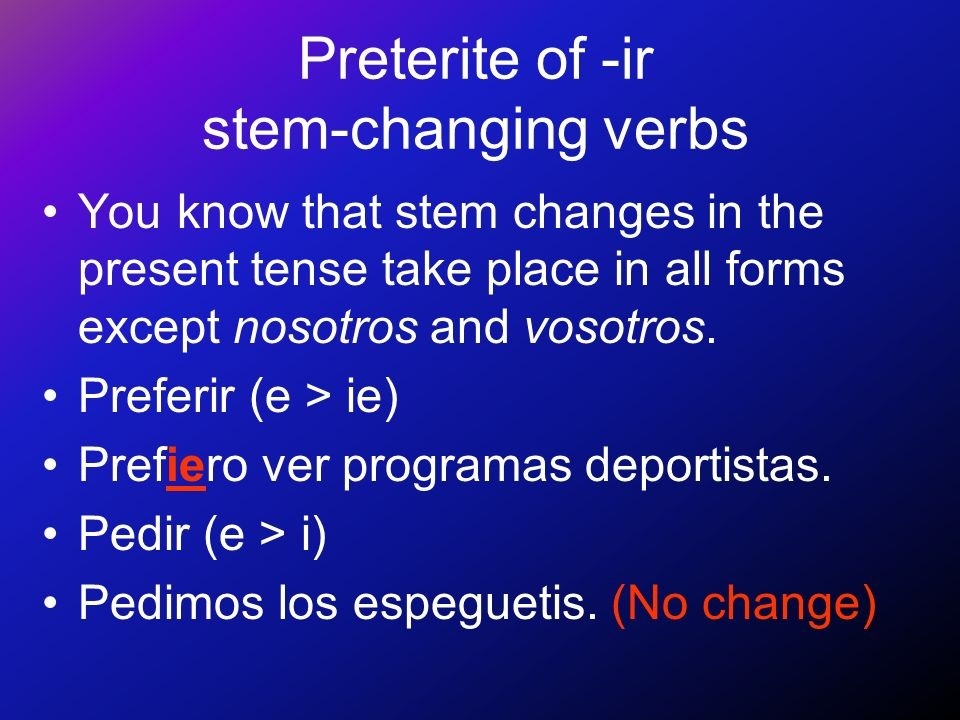

The cookie is used to store the user consent for the cookies in the category "Performance". This cookie is set by GDPR Cookie Consent plugin.

nosotros amos vosotros asteis ellos, ellas, Uds. The cookie is used to store the user consent for the cookies in the category "Other. To conjugate regular -AR verbs in the preterite, To conjugate regular -ER and -IR verbs in the preterite, drop the AR & add the appropriate ending: drop the ER/-IR & add the appropriate ending: yo t aste l, ella, Ud. The cookies is used to store the user consent for the cookies in the category "Necessary". The cookie is set by GDPR cookie consent to record the user consent for the cookies in the category "Functional". The present participle or gerund of Spanish verbs is formed with the ending - ando for - ar verbs and - iendo for -er and - ir verbs. The cookie is used to store the user consent for the cookies in the category "Analytics". These cookies ensure basic functionalities and security features of the website, anonymously. Necessary cookies are absolutely essential for the website to function properly. Check out the table of regular preterite endings below. To conjugate a regular verb in the preterite tense, simply remove the infinitive ending (-ar, -er, or-ir) and add the preterite ending that matches the subject. There are only two sets of endings for regular preterite verbs, one for-ar verbs and one for both-er and-ir verbs. Which is the correct ending for a preterite verb? Take its stem, qued-, and add the endings outlined in the table.

Since quedar is a regular verb, its preterite conjugation is pretty simple. For example, you can use it to talk about when you last met with your best friend or to say that the T-shirt she gave you suited you. With the preterite of quedar, you can talk about past situations. What can you do with the preterite of quedar? To conjugate a regular verb in the preterite tense, simply remove the infinitive ending (-ar, -er, or -ir) and add the preterite ending that matches the subject. There are only two sets of endings for regular preterite verbs, one for -ar verbs and one for both -er and -ir verbs.
#Llegar preterite endings how to
How to conjugate a Spanish verb in the preterite tense? Llegar is a regular verb, so to conjugate it just take its stem (lleg-) and add the preterite endings. We use the preterite to talk about past actions that are finished or over. When to use the preterite in Llegar past tense? He/she sleeps you sleep (formal, singular) For regular verbs, the preterite is formed by removing the -ar / -ir / -er endings from the infinitive and adding the following preterite endings: Question Complete the sentences with the. Using the chart below you can learn how to conjugate the Spanish verb llegar in Present Progressive tense….Mode: Indicative. What is the present progressive of llegar? The Past Participle of the Spanish verb llegar Past Participle


 0 kommentar(er)
0 kommentar(er)
